I’ve got a question for you, my fellow BattleTech aficionados. Why doesn’t everyone just scrap their LRM-20s and use a bunch of LRM-5s in their place? This is a question that has dogged me ever since I got into BattleTech and one that I’ve decided to answer once and for all.
For me, this all started way back with MechWarrior 2: Mercenaries when I discovered than an LRM-5 weighs just 2 tons, meaning I could boat-up four of those suckers and get the equivalent firepower of an LRM-20 but at just 80% of the tonnage requirement. Then I got into the tabletop game and saw that the LRM-5 was still just 2 tons, and it made me wonder why didn’t everybody scrap all their LRM-20s and duct-tape together a bunch of LRM-5s? Is every ‘Mech jock in the entire universe stupid or what?!
It turns out there’s a reason for that, and that reason has changed with every new generation of BattleTech games. But for much of BattleTech video game history, there was little reason to keep those big LRM launchers instead of swapping them for an equivalent number of LRM-5s, and that made me wonder just how the heck this innocuous weapon system can be so weird across so much of BattleTech’s games.
So today, we’re going to take a deep dive into the many intricacies of perhaps one of BattleTech’s most boring weapon system: the LRM-5.
LRM-5, According To The Table
Starting where it all began, of course. My introduction to the LRM-5 might have come in the form of a video game, but to understand the LRM-5 we have to go back to the beginning, and that means tabletop rules. Even here the LRM-5 can seem like a questionable choice, so let’s break this weapon down.
The LRM-5 weighs 2 tons, takes 1 crit, and can fire a packet of five measly long-range missiles at a target up to 21 hexes away (Inner Sphere stats, of course). One look at Sarna’s vast repository of BattleTech knowledge reveals that this is a significant weight savings when compared to larger missile launchers such as the LRM-10 (5 tons, 2 crits), LRM-15 (7 tons, 3 crits), and LRM-20 (10 tons, 5 crits), so why would you ever want to use any of those larger launchers?
The answer is hiding in the damage tables. To determine damage, you roll 2D6 and then consult the table. For most of the possible rolls, the damage between four LRM-5s and a single LRM-20 is equivalent, except for two results: a 2 and a 4. If you roll a 2 on an LRM-5 shot, then you’re only dealing 1 damage, whereas an LRM-20 is dealing 6 damage. That’s a 50% bonus over four LRM-5s firing simultaneously.
A similar story happens if you roll a 4, which causes an LRM-5 to deal 2 damage and an LRM-20 to deal 9. A single extra point of damage isn’t quite as pronounced as the snake-eyes situation, but it’s still more damage on low rolls.
There’s also heat to consider. An LRM-20 produces just 6 points of heat, but four LRM-5s firing together produce 8 points. On the other hand, you can manage your heat better by just firing a few of those LRM-5s at a time rather than all four at once, but in terms of average damage per round, the LRM-20 is clearly beating our cludged 4xLRM-5.
Whether you think a little less heat and a little more consistent damage is worth the extra two tons and one critical slot is a matter of personal opinion, but the math checks out--at least, for the tabletop. That story changes dramatically once we get into the video games.
Off The Table And Into The Silicon Wafer
While things were just fine and dandy for the LRM-5 in the tabletop version of BattleTech, as soon as things went digital, shit got weird. Really weird.
A little while back, I briefly touched on a YouTube video from Pixelmusement that revealed the actual damage values of all weapons used in MechWarrior 2, and the LRM-5 is on that list. Now, this is Clan tech instead of Inner Sphere, but we can still highlight some major differences in the LRM-5 thanks to this exhaustive analysis.
First, LRMs in the old MechWarrior 2 days didn’t use damage tables to randomly calculate the amount of mayhem a flight of LRMs will produce. In MechWarrior 2, every missile was its own object with its own specific trajectory. However, LRMs had such good homing in those days that a missile lock often meant that every single one of those missiles would hit its target--many of them in the same location. Worse, the splash damage of the explosion essentially doubled the firepower of LRMs, meaning you were dealing 2 damage per missile instead of one.
So in MechWarrior 2, it absolutely made sense to replace all your LRM-20s with LRM-5s, but only if you had space for them. MechWarrior 2 limited players to just 10 total weapons systems, so this would work on some ‘Mechs like the Vulture, but not on more heavily-laden machines like the Mad Cat.
The only downside to this strategy was heat. LRM-5s still produced more heat than the equivalent LRM-20, so that extra ton is likely to be used up with a heat sink to offset the extra heat produced.
MechWarrior 2: Mercenaries still had inexplicable Streak LRMs, but at least the splash damage bug had been fixed so that each individual missile only did 1 damage. However, the same situation remained: all missiles fired hit their mark, and that meant random damage tables couldn’t account for the extra 2 tons and 1 crit that an LRM-20 has over four LRM-5s. Once again, it absolutely made more sense to toss your heavier LRM units for group-fired LRM-5s.
This situation continued into MechWarrior 3, but finally changed in MechWarrior 4 when LRMs got a complete overhaul. Rather than fire streak-style homing missiles directly at whatever you had a lock on, LRMs in MechWarrior 4 would take an arcing path over obstacles if fired at great distances. Missiles were also grouped into “packets” of 5, just like in the tabletop game, and it was certainyl possible for those packets to miss a fast-moving target.
However, this isn’t quite the same as the tabletop’s damage. Those packets of 5 missiles either struck home for 5 damage (actually 4--MechWarrior 4 used weird damage values) or they missed and did nothing. There’s no in-between. So, boating LRM-5’s once again appears to make sense.
Only MechWarrior 4 did something different that finally gave players a good reason to use a larger missile system over a smaller one. MechWarrior 4 added fixed hardpoints to the MechWarrior series that prevented a player from simply swapping out whatever weapon systems they wanted. Although the tonnage of each weapon remained the same, critical slots had been replaced by weapon hardpoints that would allow only a certain amount of energy, missile, or ballistic weaponry.
An Inner Sphere LRM-20 still weighed 10 tons, but now it took up two “missile” slots in a hardpoint. This meant that a single LRM-20 could only ever be replaced by two LRM-5s, albeit with significant weight savings and with only 8 possible damage (again, MechWarrior 4 used different damage values than pretty much every other MechWarrior game).
For me, MechWarrior 4 was where LRMs started to make sense again. Yes, larger LRM packs were less efficient in terms of weight, but they were more efficient in terms of damage per missile hardpoint slot. The key here is that MechWarrior 4 changed the relationship between damage, tonnage, and space. Instead of tonnage being the key limiter to damage, hardpoint slots were often the limiting factor. This meant that it made sense for larger ‘Mechs to have larger LRM packs, while smaller ‘Mechs made do with LRM-5s.
The Modern Solution To The LRM Problem
In modern games like MechWarrior 5: Mercenaries and BATTLETECH, the solution to the LRM problem has become a hybrid of MechWarrior 4’s hardpoints and more classic tabletop ‘Mech construction. In both titles, ‘Mechs are limited in the number of specific energy, ballistic, and missile-based weapons they can mount in any given section of the chassis, but the more traditional critical slot layout is also retained from the tabletop game.
MechWarrior 5 goes one step further. Instead of just having missile, ballistic, and energy hardpoints, it also subdivides those weapons into small, medium, and large categories. A small weapon can fit into any sized hardpoint, but it occupies the entire hardpoint and prevents any additional weapons from slotting in. A large weapon can only occupy a large weapon hardpoint, so an LRM-5 can replace a single LRM-20, but an LRM-20 can’t replace an LRM-5. And, crucially, four LRM-5s cannot replace an LRM-20 unless the chassis has four total available missile hardpoints.
You’d think that would be enough for MechWarrior 5, but no. PGI REALLY wanted to differentiate between small and large launchers, so they added a very interesting quirk to LRMs.
In MechWarrior 5 there are actually two styles of LRM launcher: stream launchers and regular launchers. Stream launchers fire their missiles one after the other so that each missile’s launch doesn’t affect the one behind it. This causes stream launchers to be somewhat more accurate and have a tighter grouping than regular launchers.
Regular LRM launchers fire all their missiles at once, creating a sort of “cloud” of missiles that home in on their target. The orientation of that cloud is random every time it’s fired, and that randomizes how damage is applied when missiles strike their target.
If they strike their target. In MechWarrior 5, the larger the launcher, the larger the cloud of missiles. Unlike in previous MechWarrior games, missiles don’t converge when they approach their victim, so if the target is significantly smaller than the cloud of LRMs fired--like in the case of an LRM-20 fired at a Locust--then the vast majority of those missiles will just hit the ground and deal no damage.
Suddenly the LRM-5 is more than just a smaller version of larger launchers. Since the cloud fired from an LRM-5 is small, it can be used against smaller targets like light ‘Mechs and armored vehicles. LRM-20s, on the other hand, are only really useful against larger targets that will get struck by the majority of the missile cloud--otherwise you’re just wasting most of your ammo.
MechWarrior 5 is smart too. If you manage to group together four LRM-5s, firing them all at once essentially creates the same cloud as firing a single LRM-20. You do have the option of firing them one at a time, however, which will keep the cloud to a smaller size that’s more appropriate to dealing with smaller targets and adds a measure of flexibility.
I gotta give PGI credit, this is probably the most innovative and effective iteration of LRMs in any MechWarrior game. Boating is discouraged, but having an LRM-5 or two is still an effective way of dealing with pesky light ‘Mechs at extreme ranges. LRM-20s are better for heavy and assault ‘Mechs or heavily armored structures. The difference in weight efficiency is overshadowed by the importance of using the right weapon for the right job.
Now let’s take a look at Hairbrained’s BATTLETECH, the game that perhaps mirrors the tabletop experience more than any other BATTLETECH game ever produced. On the surface, BATTLETECH appears to handle things very similar to the tabletop, which means we’re back to maximizing damage per ton with our cludged 4xLRM-5 launchers again, but it’s not immediately obvious what’s going on when the computer is the one rolling digital dice. To find out, I actually reached out to Harebrained Studios to get the inside scoop on what’s happening when you light off a flight of missiles at some schmuck in a Thunderbolt.
“LRMs roll a separate to-hit for each missile in the rack,” BATTLETECH engineer Connor Monahan told me via email. “The first to-hit is rolled on a normal hit table (respective of facing) and that first hit determines the ‘center’ of the LRMs clustering, then all subsequent location rolls for successful hits from that missile rack roll on that influenced/clustered table.”
So, does that mean there’s really no real damage advantage between four LRM-5s and a single LRM-20? Monohan explained essentially “yes,” but that’s not the whole story in BATTLETECH.
First, there’s still heat to consider. Four LRM-5s are a lot hotter than an LRM-20, and that will seriously reduce a ‘Mech’s average damage per round. Second, since every missile rolls separately, missile weapons are some of the best weapons in the game to take against smaller, more evasive targets. A medium laser with 40% to-hit is most likely going to miss and deal no damage at all, whereas an LRM-20 with a 40% hit chance is likely to still deal 8 total damage with 8 missile hits. This is in stark contrast with MechWarrior 5 where larger launchers are actually no better than smaller ones against small targets.
And third, you can split your fire with four LRM-5s. This is especially useful when a pilot has Multi-Target, which enhances your accuracy when firing at multiple opponents.
The Evolution Of A Tiny Missile Launcher
So, are we done? Is MechWarrior 5 the pinnacle of long-range missile technology? Or is BATTLETECH and its faithful adherence to the original tabletop rules the best that an LRM can be?
Honestly, I think MechWarrior 5 has gotten the formula right. You can still boat those LRM-5s to replace heavier LRM-20s and wind up with weight savings, but there are appropriate tradeoffs. You lose the option of mounting other missile launchers (most likely, as few ‘Mechs have more than four missile hardpoints), but you gain extra tons to devote to other weapon systems. Each LRM launcher is best suited to increasingly larger enemies, and if you do decide to mount multiple LRM-5s, you’re given maximum flexibility in being able to engage both large and small targets without wasting ammunition.
But I don’t think the evolution of the LRM is over. We started out with ludicrously broken and overpowered missiles in MechWarrior 2, and each iteration of BattleTech brought them first towards balance, and then to something better: justification.
Is MechWarrior 5 where the evolution of the LRM launcher ends? Or will long-range missile launchers of the future take a more retro-inspired approach like BATTLETECH?
Right now it’s hard to say since we’re sort of in-between generations at the moment. All I can say is that I will always hot-swap my LRM-20s for LRM-5s until I’m convinced to do otherwise. And even then, I’ll probably still swap for those two extra tons. It’s just how I’ve been taught.
And as always, MechWarriors: Stay Syrupy.
(Edit: Yes, I know I’m omitting quite a few games, including the first MechWarrior, MechCommander, and MechWarrior Online. But I think this article is long enough.)

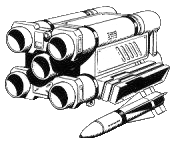
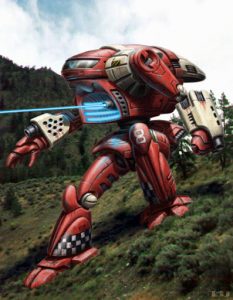
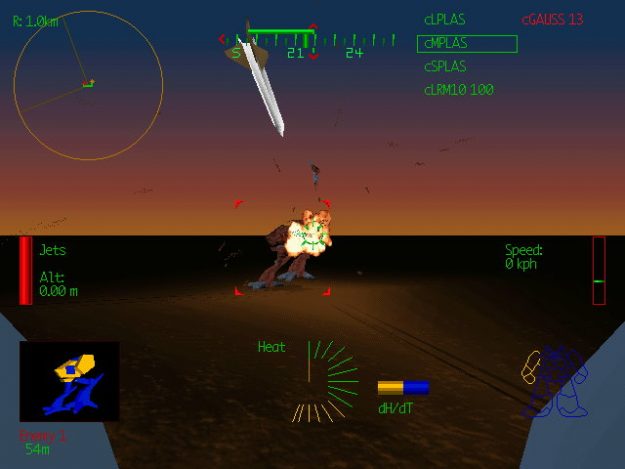

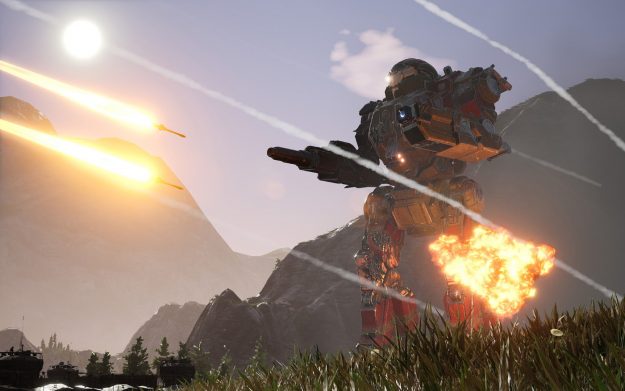
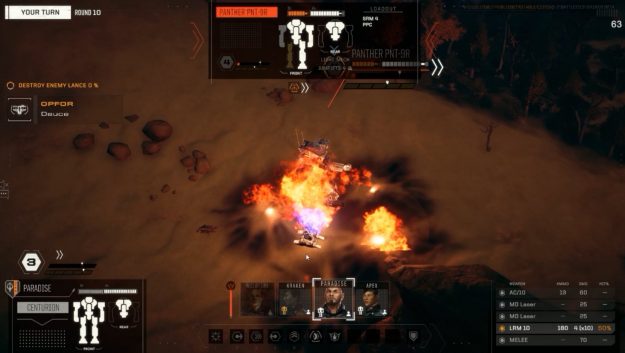
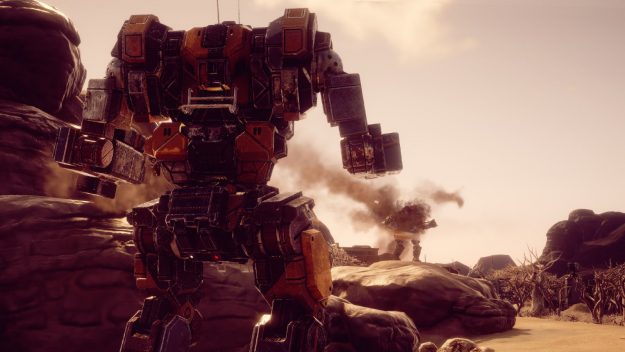

Now let’s get really crazy and implement them the way the original novels and game did, with no lock-on at all. Learn to actually shoot them. Use a spotter. Etc etc .
Great Vindicator pic.
Sean,
Admittedly, I had never considered these sorts of differences, before. Like you, I’ve always swapped out anything larger than 5s for 5s, and it didn’t make any sense not to, even with the problems surrounding heat. I was just always able to control how often I fired my weapons, spacing them for maximum heat dissipation, and the number of missiles available per ton just seemed to agree with how I used them. However, if indeed weapon systems of all sorts are being re-balanced not only for heat, space, damage, purpose vs. types of targets on the battlefield, and even hard points and, if it ever becomes possible to buy re-configurations of those hard points on individual ‘Mechs, then perhaps our beloved game will finally find it’s best tactical and strategic iteration, yet.
Then, maybe then, we can have a BattleTech universe to play in.
MW5’s Stream and Cloud LRMs actually stem from the Clan and Inner Sphere tech base divide in MWO. MWO Clan LRMs fire in Stream fashion which make them more susceptible to AMS that the cloud mass of IS launchers, a balancing desicion.
You do miss a couple of important things in regards to tabletop use of LRMs. First is that if the average to hit numbers are higher than 8 then the 5 LRM5 will tend to out damage the 1 LRM20. And even if you go with 4 LRM5 and 2 heatsinks you’ll have more consistent damage over time. Even with 2 LRM5 vs 1 LRM10 you will have better damage over time and a slightly better damage per launch.
The 2nd thing is advanced fire-controls. Once Artemis IV is available, the LRM5 cannot complete as well against the large launchers. It is still better than LRM10+Artemis IV.
Mostly my experience for tabletop has been that you want to use LRM5 pre-Artemis IV and LRM15 and 20 after. Never ever use LRM10 if you have a choice.
One of the things I have going for my Salient Horizon setting is the Free Worlds League evolution toward the smaller LRM-5 packs in conjunction with NARC Missile Beacons. It ties into their production sites at the time (early 3050s), a desire to achieve parity with lighter Clan systems of the day, and their teamwork philosophy (well at least on a tactical level). We are currently optimizing InnerSphere designs over on OBT for this setting and I really look forward to seeing how it will eventually work on a large scale. Alternatively the AFFC and ComGuards are going for larger LRM racks where possible paired with Artemis IV.
Another point in favour of 4×5 over 1×20 in tabletop – if you take a weapon crit, the LRM20 loses 100% of its combat effectiveness. With 4x5s, you lose only 25%.
MW4 also had a AMS mechanic that made the LRM 5… USELESS!
(L)Ams in MW4 always and without fail or exception took out the first ‘packet’ of missiles fired your way.
LRM 5 fires one pack and therefore does no damage; and never will. BUT! the LRM 10 will do half, and the 15: 2/3 and 20: 3/4. So boating LRM 5s is gambling that the other guy lacks AMS. Some mech simply don’t have the option and can be swarmed by cheap LRM 5 launched death. The Lams toters though? Your day just became bad.
The decision not to include MWO for a balancing LRM5 is bad, seeing the LRM5 in MW5 is just a subset of the ones in MWO and taken from there.
LRM5 in MWO actually fires faster than LRM20, since also the firing anim composites with the cooldown. They are also noticeably more accurate since they don’t spread that much.
However, they also have disadvantages such as the following:
– Limited weapons hardpoints
– More heat production (exacerbated because of faster firing, but also less efficient)
– Perhaps more importantly, the lack of many missile hardpoints prevents boating. Boating LRMs is the *only* way for missiles to compete with AMS meta, as the AMS always kills basically set number of missiles in a salvo before they can reach you. So if an AMS kills 10 missiles, your two LRM5 are worthless, while if you use 2 LRM20, 30 of 40 missiles get a chance to hit. Almost no mech can take 8 LRM5 (though I pioneered in the “many small missiles” meta with a fast Clan mech that gets 11 missile hardpoints… this is an exception tho, as most mechs, even those with missile focus, will have from two to four)
Once Artemis IV comes into the picture, smaller launchers stop making much sense for big ‘mechs.
Yep, too few forget that Artemis is a thing, and more so that it’s superior tonnage and space wise.
4 lrm 5 will produce on average 4 flights of 3 missiles each (providing you hit with all launchers) while a lrm 20 will produce on average one flight of 12 missiles that translates into 2×5-point clusters and one 2-point cluster. This traslates into little damage spread out all over the target mech from the lrm 5s (and is likely at least one would miss even on 4+ to 6+ needed to hit) and the lrm-20 would deal more. This makes the 4xlrm5 good against vehicles and mechs with internal structure exposed, and the lrm-20 good against the rest of targets.
BT wise there’s also the fact that Artemis IV is a better option for LRM 15s and 20s than LRM 5s, both damage per ton, and space wise. Average damage for am LRM 5 is 3/4 w/ DHS and min 20 shots, or .75 d/t, while an LRM 15 and 20 are 9/12.5 and 12/17 or .72 and .705 d/t respectively. We don’t speak of LRM 10s as they’re literally the worst at .66 d/t.
However with Artemis the LRM 5 goes up to 4/5 or .8 d/t, while the LRM 15 and 20 go up to 12/13.5 and 16/18, both .88 d/t. LRM 10 funny enough is now tied with LRM 5s.
While crit wise, the LRM 5 goes from 3/2 to 4/3 (1.5 to 1.33) d/c, as the 15 goes from 9/6 to 12/7 (1.5 to 1.71) d/c, as the 20s go from 12/9 to 16/10 (1.33 to 1.6) d/c. While LRM 10s come in last at 6/4 and 8/5 (1.5 to 1.6) d/c.
On the tabletop, there’s ONE reason to get the 10 over the twin 5’s, and a reason you seem to have missed. Time. Assuming a successful hit and a cluster roll of twelve the following rolls occur for each launcher type. LRM-10: hit roll, cluster roll, two location rolls, total rolls for the LRM-10: four. Twin LRM-5s: two hit rolls, two cluster rolls, two location rolls, total rolls for twin -5s: six. This only gets worse with each launcher upgrade. Rolls take time, and on tabletop (where such things are NOT managed by a computer), that can add up. More ammo, more possible attacks, potentially longer games (barring game-ending crits and head vaporization).
HBS Battletech pilots can have the Breeching Shot skill. It allows you to ignore cover and grounded in the target as long as you are only firing one weapon system at that target. In this case an LRM20 could do approximately double the damage of 4 LRM5’s. I found the best combo to be as many LRM5’s as you have hardpoints, then upgrade them for larger one at a time as tonnage allows. This makes the best use of both multi-target and breaching shot. SThe default is still LRM5, but does give a pretty good reason to use larger launchers despite the extra tonnage.
I never boated LRM 5’s in Mechwarrior 4, for one reason: ammo. MW4 tracks ammo separately for each weapon system, so if you put in 4 LRM 5’s, you are committing to 4 tons of LRM ammo minimum. I have never run out of ammo on an LRM 5, or even gotten closer than… well, about halfway. An LRM 10 with the stock 1 ton is about the right amount of ammo; an LRM 20 needs 1 extra ton.
With those numbers, 4 LRM 5s with stock ammo, 2 LRM 10s with stock ammo, and 1 LRM 20 with an extra ton ALL weigh the same amount. So if you really want to fire your groupings separately, you can do the LRM 5s – or go with the LRM 10s for better hardpoint usage. But I’ll slap on a 20 with extra ammo for the heat saving.
Doesn’t HBS Battletech use the Hardpoint system as well? Meaning you need to have the hardpoints to fit those LRM5s into the mech.